Parliament acts • Reform Act 1832

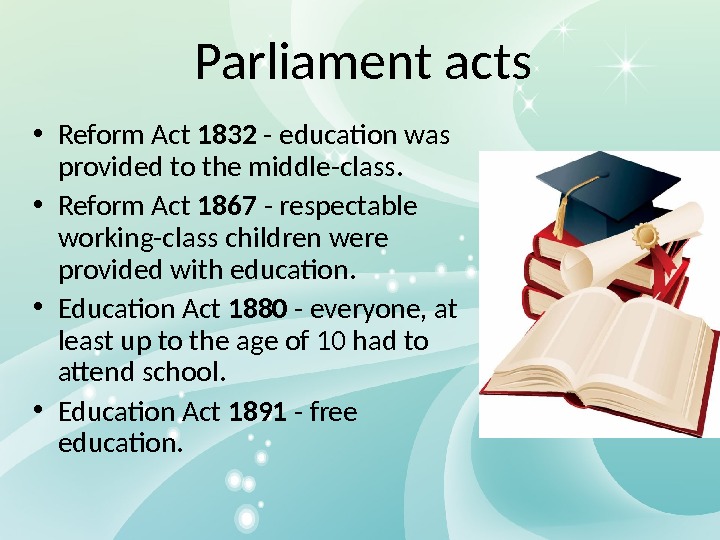
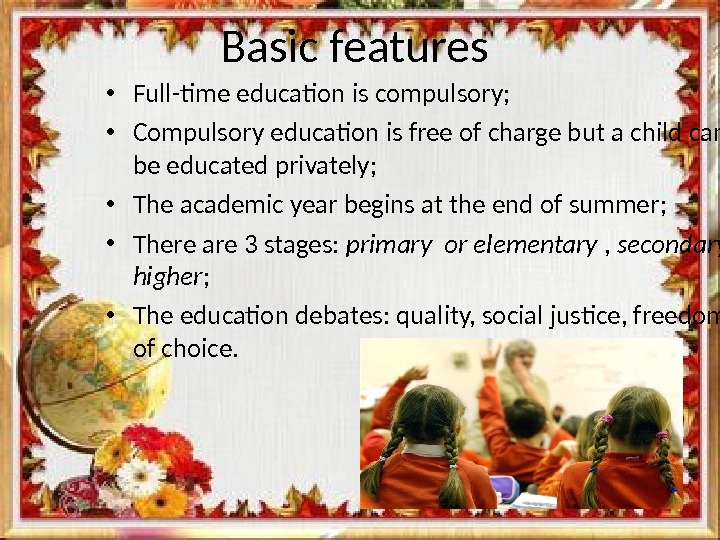
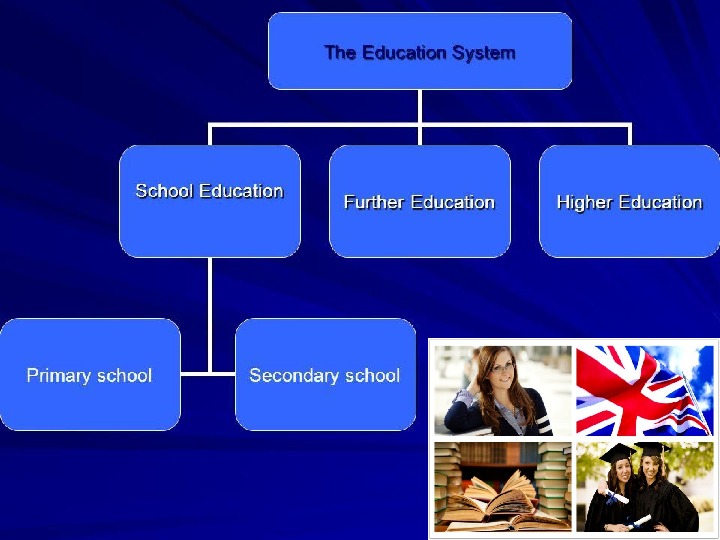

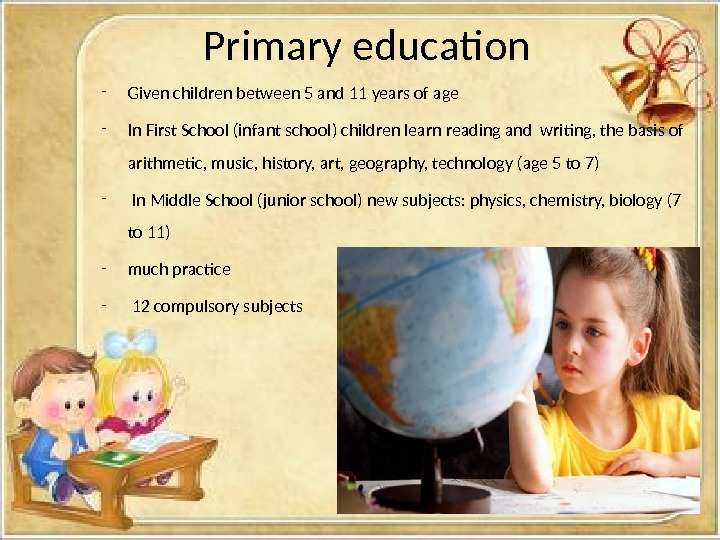
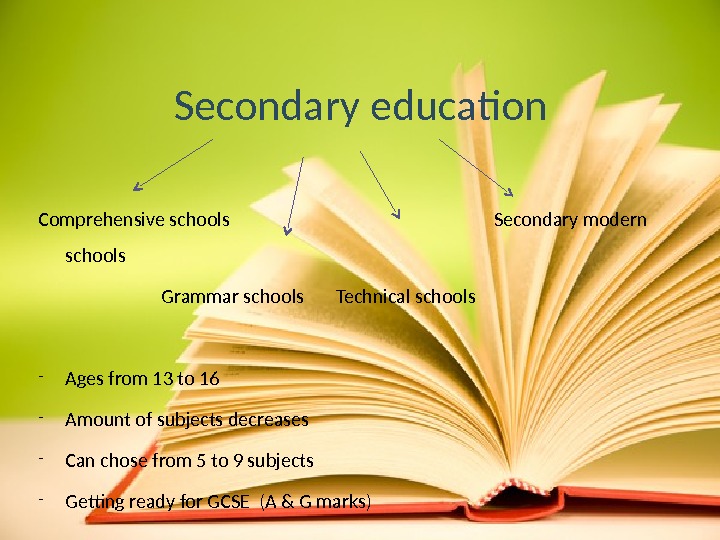

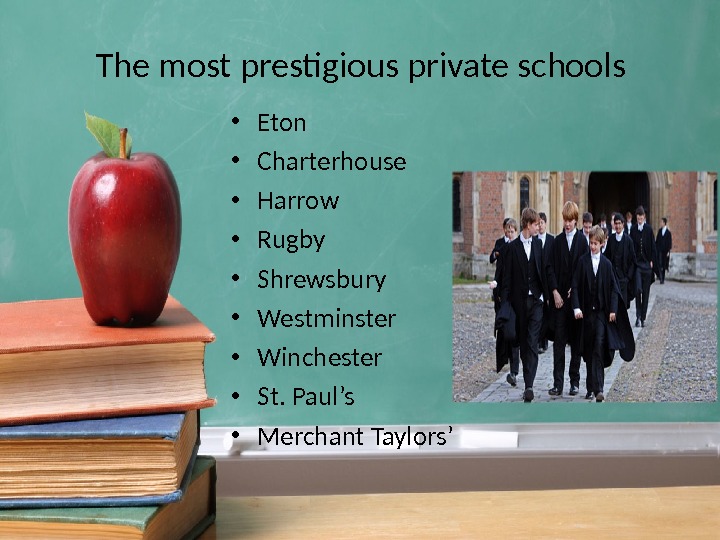
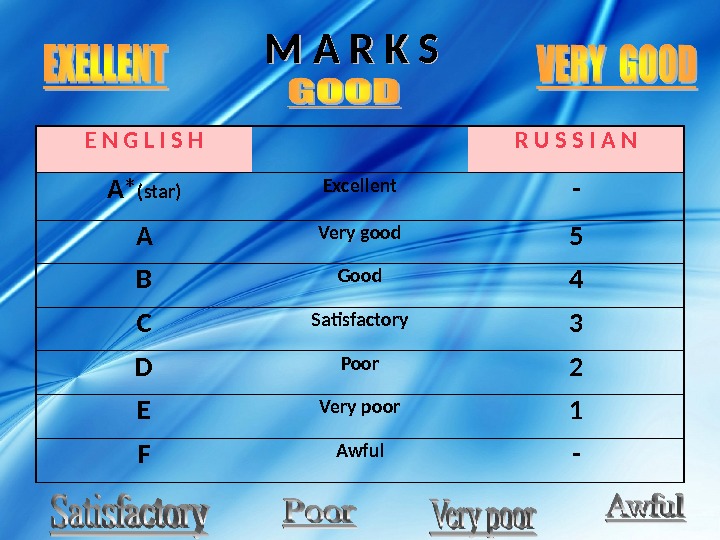
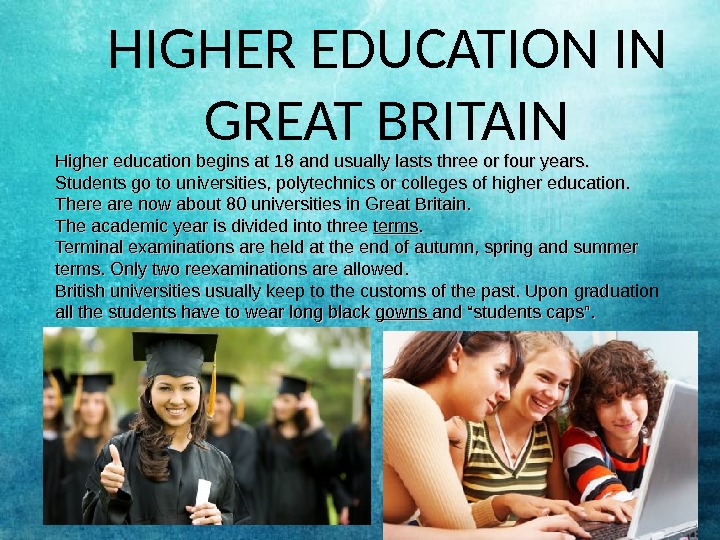
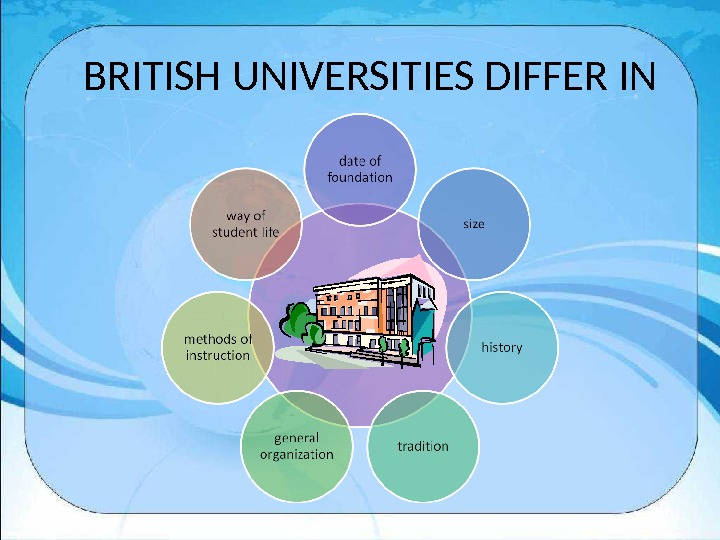
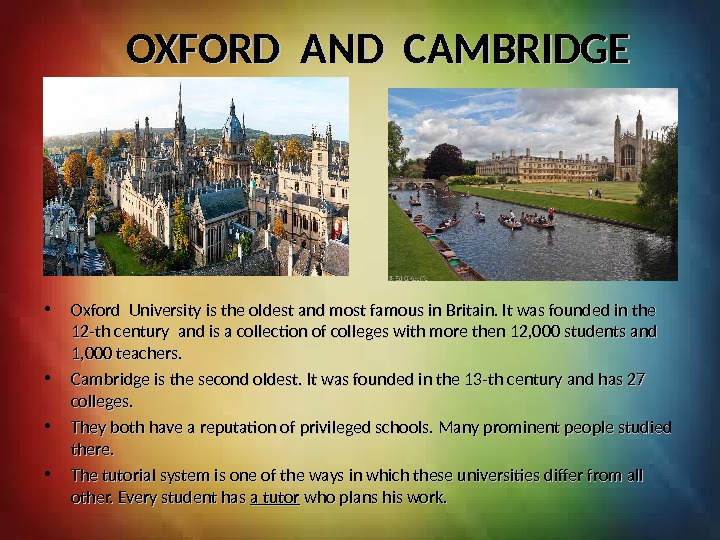
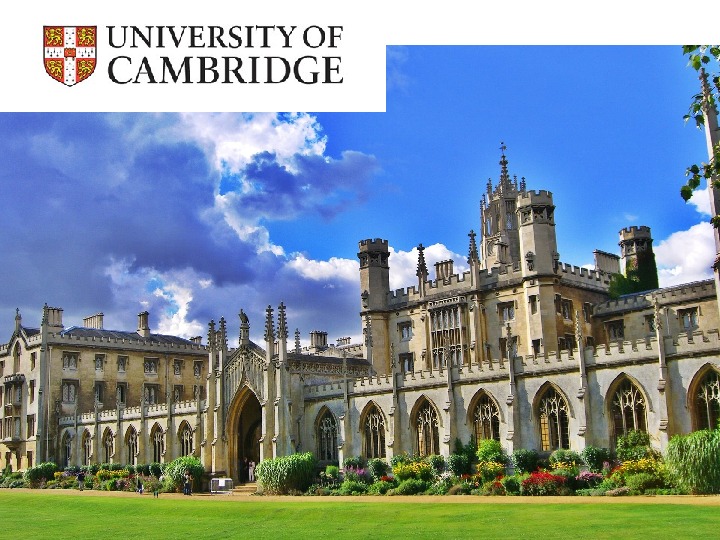
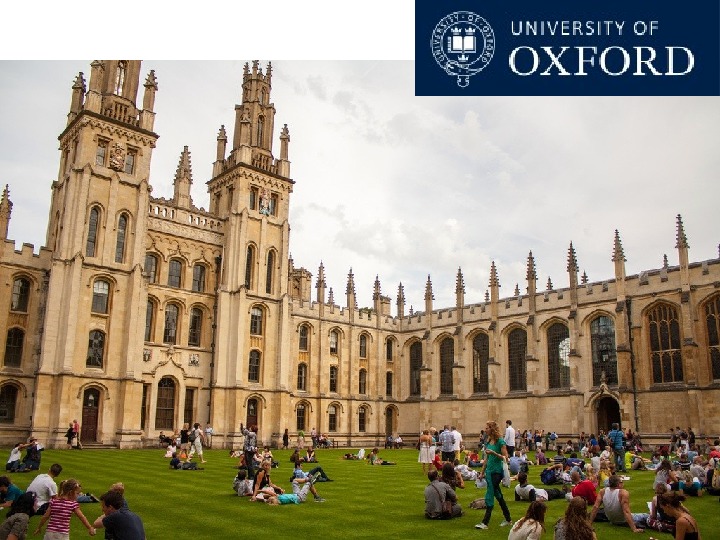
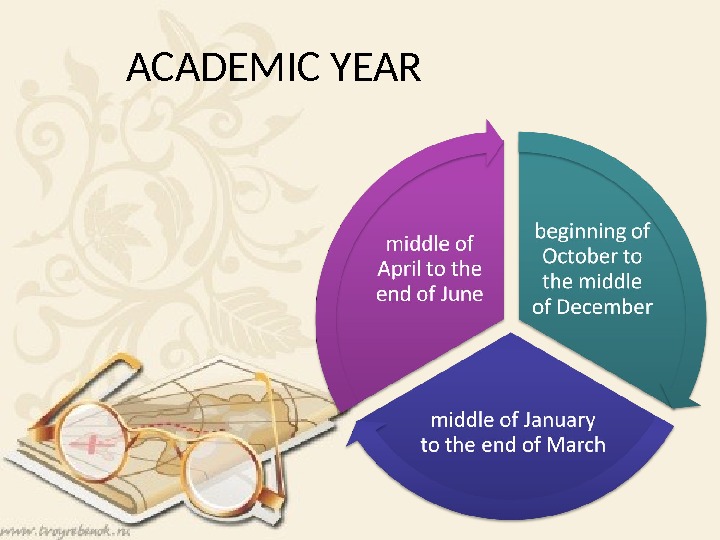
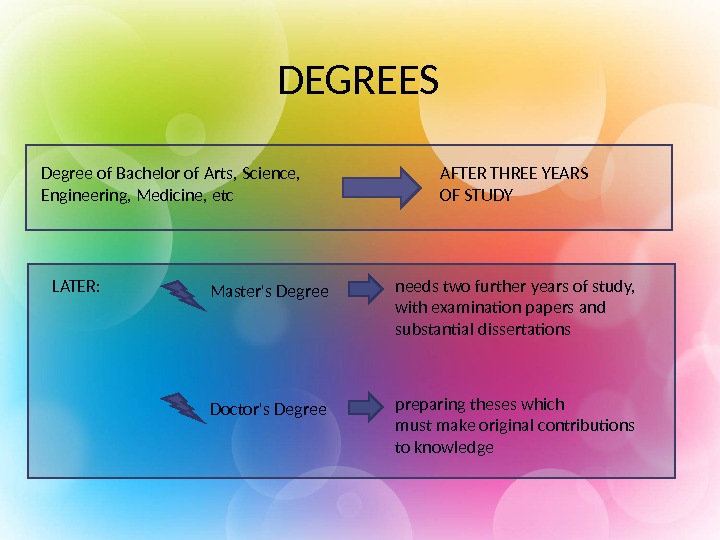
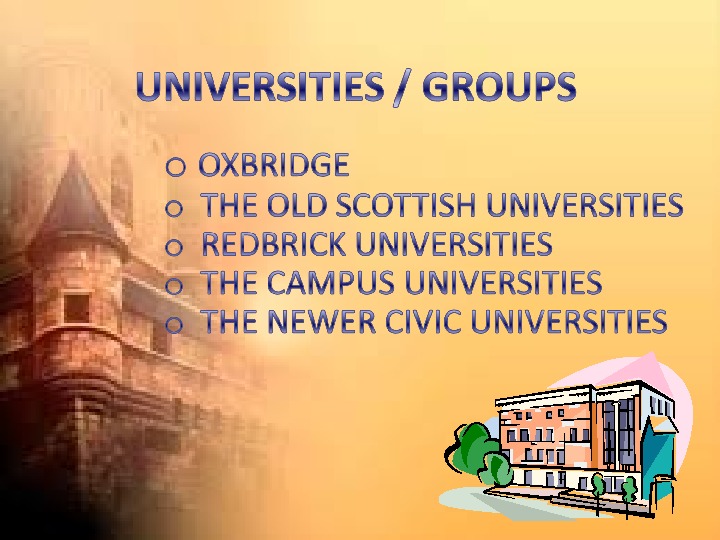
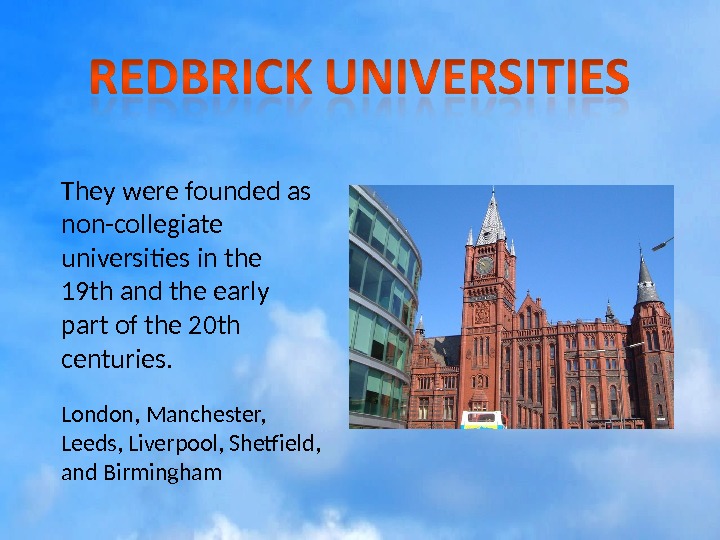
education_in_great_britain_tokareva_k_10-a.ppt
- Размер: 7.4 Mегабайта
- Количество слайдов: 19
Описание презентации Parliament acts • Reform Act 1832 по слайдам

 Parliament acts • Reform Act 1832 — education was provided to the middle-class. • Reform Act 1867 — respectable working-class children were provided with education. • Education Act 1880 — everyone, at least up to the age of 10 had to attend school. • Education Act 1891 — free education.
Parliament acts • Reform Act 1832 — education was provided to the middle-class. • Reform Act 1867 — respectable working-class children were provided with education. • Education Act 1880 — everyone, at least up to the age of 10 had to attend school. • Education Act 1891 — free education.
 Basic features • Full-time education is compulsory; • Compulsory education is free of charge but a child can be educated privately; • The academic year begins at the end of summer ; • There are 3 stages: primary or elementary , secondary , higher ; • The education debates: quality, social justice, freedom of choice.
Basic features • Full-time education is compulsory; • Compulsory education is free of charge but a child can be educated privately; • The academic year begins at the end of summer ; • There are 3 stages: primary or elementary , secondary , higher ; • The education debates: quality, social justice, freedom of choice.

 School education • primary education (up to 11) • secondary education ( up to 16)
School education • primary education (up to 11) • secondary education ( up to 16)
 Primary education — Given children between 5 and 11 years of age — In First School (infant school) children learn reading and writing, the basis of arithmetic, music, history, art, geography, technology (age 5 to 7) — In Middle School (junior school) new subjects: physics, chemistry, biology (7 to 11) — much practice — 12 compulsory subjects
Primary education — Given children between 5 and 11 years of age — In First School (infant school) children learn reading and writing, the basis of arithmetic, music, history, art, geography, technology (age 5 to 7) — In Middle School (junior school) new subjects: physics, chemistry, biology (7 to 11) — much practice — 12 compulsory subjects
 Secondary education Comprehensive schools Secondary modern schools Grammar schools Technical schools — Ages from 13 to 16 — Amount of subjects decreases — Can chose from 5 to 9 subjects — Getting ready for GCSE (A & G marks)
Secondary education Comprehensive schools Secondary modern schools Grammar schools Technical schools — Ages from 13 to 16 — Amount of subjects decreases — Can chose from 5 to 9 subjects — Getting ready for GCSE (A & G marks)
 Private education • The g overnment does not support these schools financially. • Choice: day or boarding schools , single-sex or mixed schools. • There are 2, 400 schools in Britain. • 10% of all pupils in Britain go to public schools. • Nearly all pupils pass successfully A-level exam.
Private education • The g overnment does not support these schools financially. • Choice: day or boarding schools , single-sex or mixed schools. • There are 2, 400 schools in Britain. • 10% of all pupils in Britain go to public schools. • Nearly all pupils pass successfully A-level exam.
 The most prestigious private schools • Eton • Charterhouse • Harrow • Rugby • Shrewsbury • Westminster • Winchester • St. Paul’s • Merchant Taylors’
The most prestigious private schools • Eton • Charterhouse • Harrow • Rugby • Shrewsbury • Westminster • Winchester • St. Paul’s • Merchant Taylors’
 E N G L I S H R U S S I A N А* (star) Excellent — A Very good 5 B Good 4 C Satisfactory 3 D Poor 2 E Very poor 1 F Awful -M A R K S
E N G L I S H R U S S I A N А* (star) Excellent — A Very good 5 B Good 4 C Satisfactory 3 D Poor 2 E Very poor 1 F Awful -M A R K S
 HIGHER EDUCATION IN GREAT BRITAIN Higher education begins at 18 and usually lasts three or four years. Students go to universities, polytechnics or colleges of higher education. There are now about 80 universities in Great Britain. The academic year is divided into three terms. . Terminal examinations are held at the end of autumn, spring and summer terms. Only two reexaminations are allowed. British universities usually keep to the customs of the past. Upon graduation all the students have to wear long black gowns and “students caps”.
HIGHER EDUCATION IN GREAT BRITAIN Higher education begins at 18 and usually lasts three or four years. Students go to universities, polytechnics or colleges of higher education. There are now about 80 universities in Great Britain. The academic year is divided into three terms. . Terminal examinations are held at the end of autumn, spring and summer terms. Only two reexaminations are allowed. British universities usually keep to the customs of the past. Upon graduation all the students have to wear long black gowns and “students caps”.
 BRITISH UNIVERSITIES DIFFER IN
BRITISH UNIVERSITIES DIFFER IN
 OXFORD AND CAMBRIDGE • Oxford University is the oldest and most famous in Britain. It was founded in the 12 -th century and is a collection of colleges with more then 12, 000 students and 1, 000 teachers. • Cambridge is the second oldest. It was founded in the 13 -th century and has 27 colleges. • They both have a reputation of privileged schools. Many prominent people studied there. • The tutorial system is one of the ways in which these universities differ from all other. Every student has a tutor who plans his work.
OXFORD AND CAMBRIDGE • Oxford University is the oldest and most famous in Britain. It was founded in the 12 -th century and is a collection of colleges with more then 12, 000 students and 1, 000 teachers. • Cambridge is the second oldest. It was founded in the 13 -th century and has 27 colleges. • They both have a reputation of privileged schools. Many prominent people studied there. • The tutorial system is one of the ways in which these universities differ from all other. Every student has a tutor who plans his work.


 ACADEMIC YEAR
ACADEMIC YEAR
 DEGREES Degree of Bachelor of Arts, Science, Engineering, Medicine, etc AFTER THREE YEARS OF STUDY Master’s Degree Doctor’s Degree. LATER: needs two further years of study, with examination papers and substantial dissertations preparing theses which must make original contributions to knowledge
DEGREES Degree of Bachelor of Arts, Science, Engineering, Medicine, etc AFTER THREE YEARS OF STUDY Master’s Degree Doctor’s Degree. LATER: needs two further years of study, with examination papers and substantial dissertations preparing theses which must make original contributions to knowledge

 London, Manchester, Leeds, Liverpool, Shetfield, and Birmingham They were founded as non-collegiate universities in the 19 th and the early part of the 20 th centuries.
London, Manchester, Leeds, Liverpool, Shetfield, and Birmingham They were founded as non-collegiate universities in the 19 th and the early part of the 20 th centuries.
